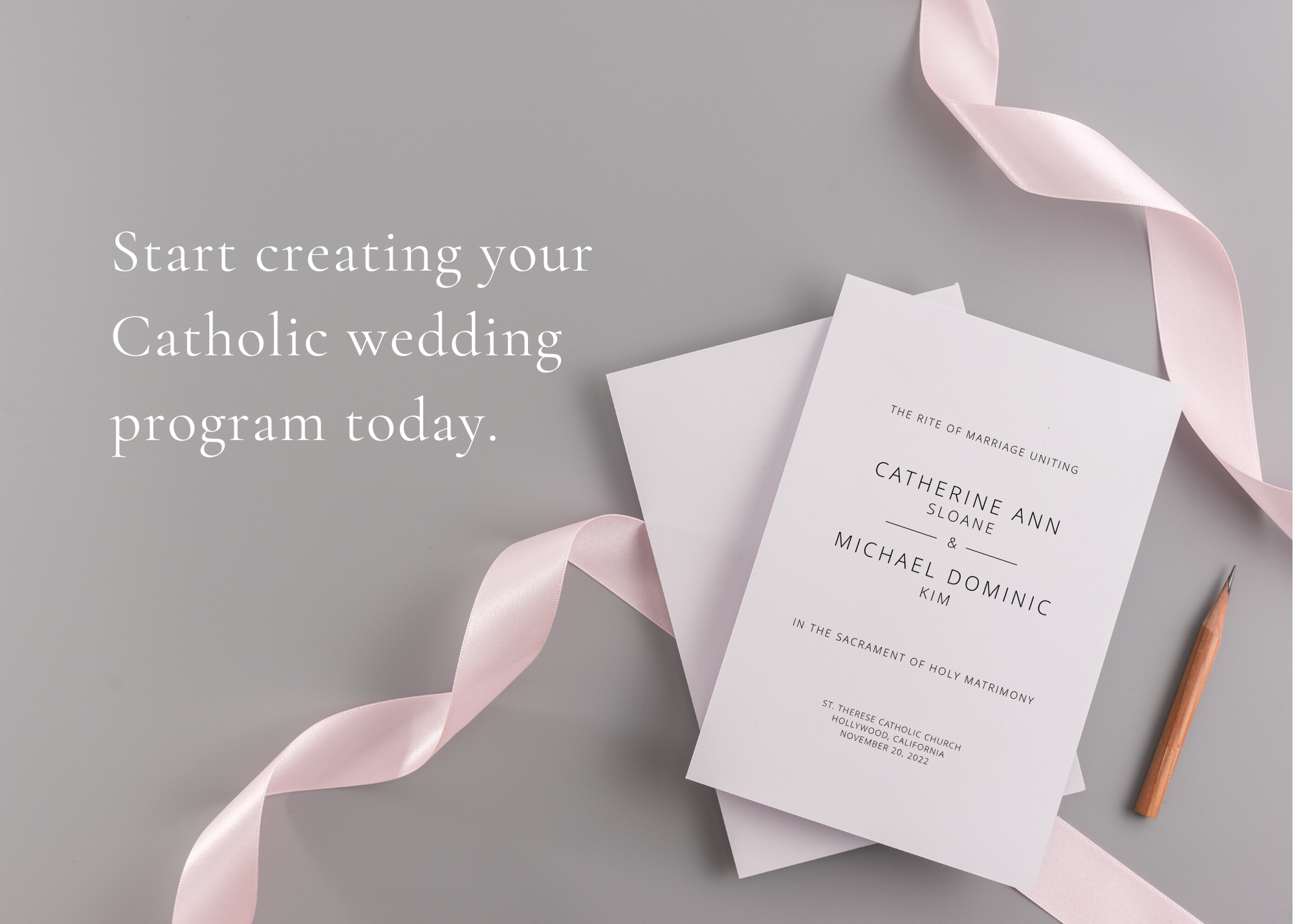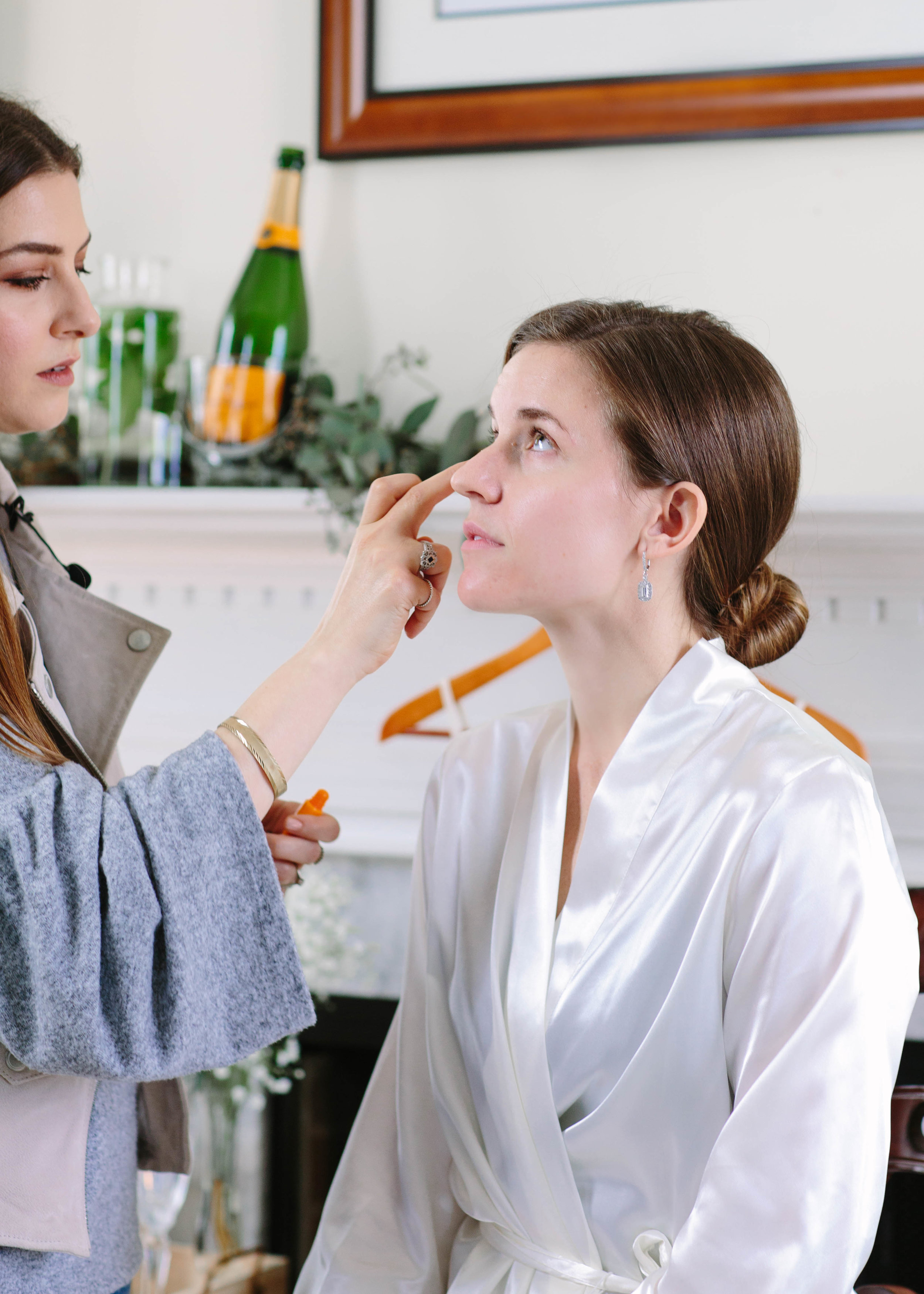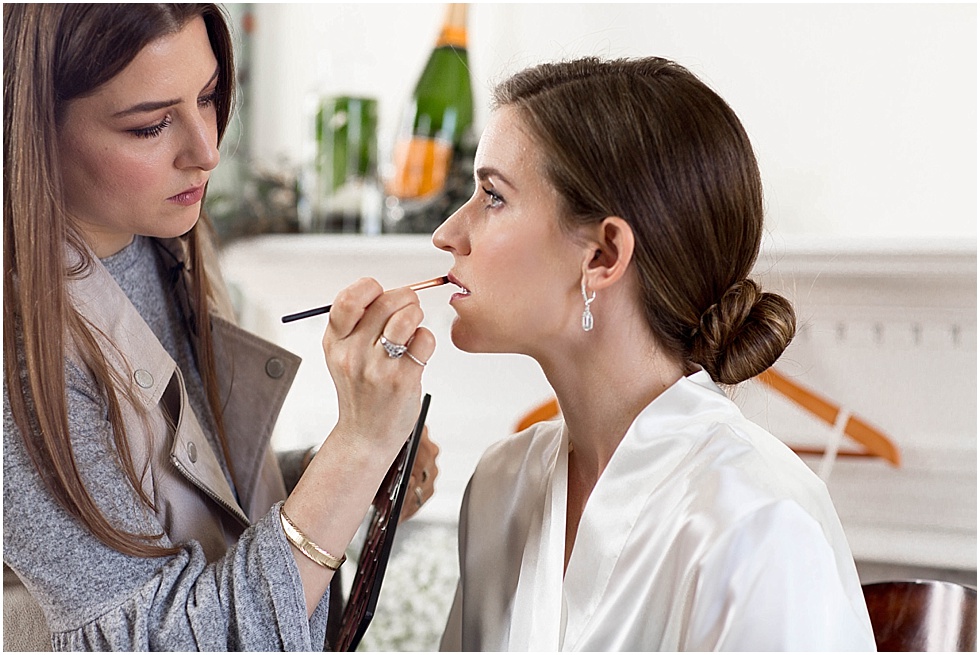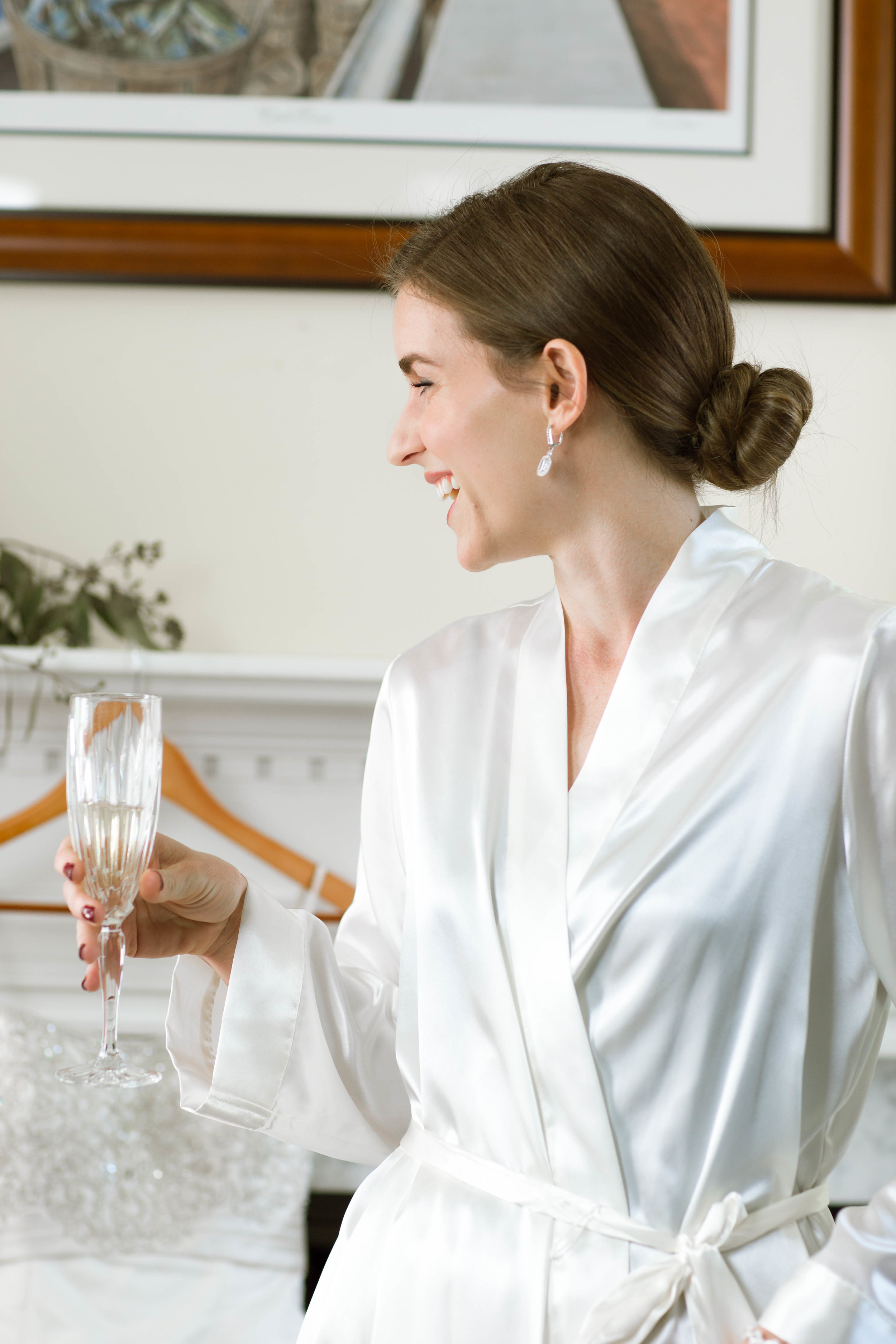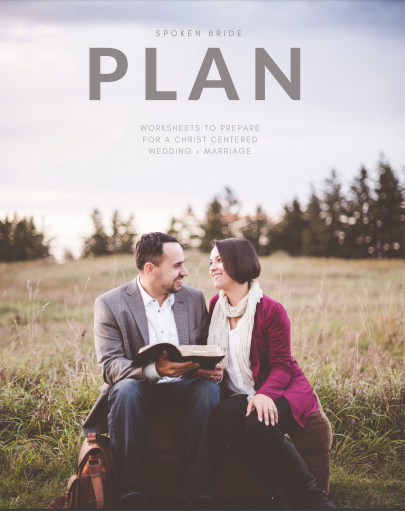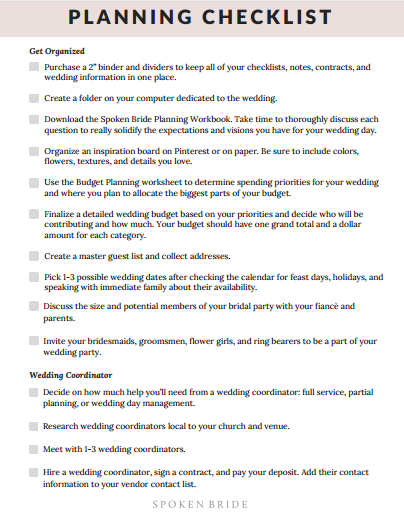Creating a Meaningful Wedding Mass Program
/The audio version of this blog post was featured on our podcast on 10/13/2020.
CHRISTINA DEHAN JALOWAY
Without a doubt, designing the program for our wedding Mass was my favorite part of the entire wedding-planning process. I have a lifelong passion for communicating and explaining the truths of our faith to others: I was a high school theology teacher for nine years and have been a catechist of some kind since college. I saw my program as an opportunity to explain, particularly to our non-Catholic and non-practicing-Catholic guests, the beauty of the Mass and the Church’s teaching on marriage. I’m not naive to think that everyone present actually read the program, but I knew that some people would, and prayed that the Lord would use it to draw our wedding guests more deeply into the liturgy.
Be clear about the mechanics of Mass.
Perhaps the most confusing thing for non-Catholics when they come to Mass, especially for the first time, is all of the standing, sitting, kneeling, and responding that we do. Normally, the priest will give directions to the congregation (most priests are well aware that a percentage of those at Catholic weddings are not familiar with the Mass), but sometimes he forgets or people need extra reminders. This is where your program comes in. Below is an example of what I mean:
First Reading
Please sit
When the lector says “The Word of the Lord,” at the conclusion of the reading, you may respond “Thanks be to God.”
These instructions won't increase your page count by much, and go a long way to making non-Catholics feel more comfortable during Mass. Note: if you use Latin Mass parts, it’s a good idea to provide your guests with a translation.
Break Open the Word
Chances are that the priest or deacon who preaches at your wedding won’t have time to go into detail about each of your chosen readings, which may leave your biblically illiterate guests feeling a bit lost. One way to help them understand the Scripture readings is to provide brief explanations of why you chose each reading, and if necessary, some context for your readings. Believe it or not, most of your wedding guests (even the faithful Catholic ones) probably haven’t read the entire book of Tobit. Here’s what I wrote for our first reading:
First Reading Tobit 8:4b-8
Context: Tobit’s son, Tobiah, has just married his kinswoman Sarah at the encouragement of the (disguised) archangel Raphael. Sarah is oppressed by a demon who has killed her last seven husbands on their wedding night. Raphael helps Tobiah and Sarah to vanquish the demon and encourages them to pray before consummating their marriage.
The couple chose this reading because of the important role that prayer has played (and will continue to play) in their relationship, and because the prayer of Tobiah and Sarah recounts the establishment of marriage by God in Genesis.
The Rite of Marriage
It’s no secret that Catholic weddings are different from secular, or even Protestant weddings, but many of your guests may not realize that the Catholic understanding of marriage is unique as well. Consider including an explanatory line or two about marriage as a Sacrament, the significance of the vows and rings, and an explanation of any special wedding traditions you’re incorporating into the rite (such as holding a crucifix or exchanging arras). For example:
In the Catholic Church, marriage is a Sacrament, which means that it is a visible sign of God’s grace, instituted by Christ and entrusted to the Church, by which Divine life is dispensed to us. This is what makes Catholic marriage so much more than a legal union, and why it must be--like God’s love for us--free, total, faithful, and fruitful. Ideally, a marriage between two Christians should be a clear, visible sign of God’s love for his people.
A note about the crucifix: Kristian and Christina decided to incorporate the Croatian tradition of holding a crucifix together while professing their vows. This symbolizes the fact that marriage, like all vocations, is a sharing in Christ’s cross and resurrection, and that both spouses are called to lay down their lives for one another as Christ did for us. The couple will hang the crucifix in a place of honor in their home so that they can be reminded to carry their crosses together and unite their sufferings with Christ’s.
The Source and Summit
The Liturgy of the Eucharist is the reason why Catholics celebrate the marriage rite within the context of the Mass. Unfortunately, the Blessed Sacrament is also commonly mistaken for a mere symbol or ritual by non-Catholics (and misinformed Catholics), which is understandable considering how mysterious the Real Presence is. A little bit of explanation goes a long way to clearing up these misconceptions. Here’s what we did:
The Liturgy of the Eucharist
The Eucharist is the “source and summit” of the Catholic faith, because it is Jesus himself, mysteriously present, body, blood, soul, and divinity under the signs of bread and wine. Thus, the Liturgy of the Eucharist is the high point of the Mass.
Offertory
During the offertory, we bring up the bread and wine that will be offered to the Father and transformed by the Holy Spirit into the Body and Blood of Christ. We also present our hearts, minds, souls, and all of our cares and concerns to the Father who loves us. The prayers of blessing that the priest prays over the gifts hearken back to the prayers of blessing over meals that Jesus would have prayed at the Last Supper that he shared with his disciples.
Great Amen
At the end of the priest’s prayer, the congregation chants “Amen”. In saying “Amen”, we say “yes, I believe” that the bread and wine that were on the altar are now sacramentally Jesus’ body and blood.
Who may receive the Eucharist?
Only baptized Catholics who have received their first communion, are practicing the faith, and are not aware of having committed mortal sins since their last confession may receive the Eucharist. If you are not going to receive, please remain in your seat and pray for and with the couple.
Not only were these explanations helpful to our non-Catholic family and friends, but we had faithful Catholic guests approach us after the wedding and comment on how beneficial these explanations were for them and their own prayer during Mass.
There’s Something about Mary…
After teaching the faith for over a decade, it no longer surprises me when non-Catholics and Catholics alike think that we worship Mary. Usually, this is the result of a misunderstanding of the meaning of the word “worship.” Worship is not the same as prayer, reverence, or honor. Worship is the surrender of one’s entire self to someone or something--and that surrender is due only to God. If you’re planning on presenting a bouquet of flowers to Mary as a couple during your nuptial Mass and know you’ll have Protestant guests at your wedding who may be confused about how we understand Marian devotion, consider including something like this in your program:
It is traditional for the newly married couple to honor Mary with a gift of flowers. Contrary to popular misconception, Catholics do not worship Mary. Worship is due to God alone. We honor Mary as Jesus’ mother, the woman whose “yes” made our salvation possible. “What the Catholic faith believes about Mary is based on what it believes about Christ, and what it teaches about Mary illumines in turn its faith in Christ” (Catechism of the Catholic Church # 487).
Again, I don’t know if anyone read this explanation or had their minds or hearts changed on the matter of honoring Mary, but I DO know that if they wanted more information, it was available to them.
Little extras
If you have room in your budget for a long-ish program, consider adding some inspirational quotations from Scripture, Saints, or theologians. I’ve compiled a short list below of some of my favorites, but there are many more to choose from!
"Love is the light--and in the end, the only light--that can always illuminate a world grown dim and give us the courage needed to keep living and working. Love is possible, and we are able to practice it because we are created in the image of God." --Pope Emeritus Benedict XVI
“Just as of old God encountered his people with a covenant of love and fidelity, so our Savior, the spouse of the Church, now encounters Christian spouses through the sacrament of Matrimony.” Christ dwells with them, gives them the strength to take up their crosses and so follow him, to rise again after they have fallen, to forgive one another, to bear one another’s burdens, to “be subject to one another out of reverence for Christ,” and to love one another with supernatural, tender, and fruitful love. In the joys of their love and family life he gives them here on earth a foretaste of the wedding feast of the Lamb.” --Catechism of the Catholic Church #148-150
“Grace has the power to make straight the paths of human love.” --St. John Paul II
“How can I ever express the happiness of a marriage joined by the Church, strengthened by an offering, sealed by a blessing, announced by angels, and ratified by the Father? . . . How wonderful the bond between two believers, now one in hope, one in desire, one in discipline, one in the same service! They are both children of one Father and servants of the same Master, undivided in spirit and flesh, truly two in one flesh. Where the flesh is one, one also is the spirit.”--Tertullian, an early Church Father
"Then, in the excess of my delirious joy, I cried out: O Jesus, my Love...my vocation, at last I have found it...MY VOCATION IS LOVE!" --St. Therese of Lisieux
St. Gregory of Nazianzus on the marriage of his parents: "They encourage us to virtue...he has been her good shepherd, whom she has prayed for and guided on his way; from her he has received the model for being a good shepherd. Both are of one dignity, of one mind, of one soul, no less in partnership of virtue and closeness to God than in a partnership of flesh. They compete with each other equally in length of life and silver of hair, in prudence and in brilliance...they are held back little by the flesh, far advanced in spirit...The world is both not theirs and theirs-one world they ignore, the other they far prefer. They have disposed of their riches, and have become rich through the industry of holiness, despising one sort of wealth and buying instead the riches of the world to come."
“Do not forget that true love sets no conditions; it does not calculate or complain, but simply loves.” --St. John Paul II
I hope this has been a helpful guide to creating a more meaningful program for the most important part of your wedding day. Please feel free to copy and paste any part of this post to use for your program, and share with other Catholic brides-to-be who may be interested.
Spoken Bride offers a beautiful, pre-formatted, and customizable Novus Ordo Wedding mass program that clearly, respectfully explains the Catholic faith and liturgy. Please visit our shop for more information.








